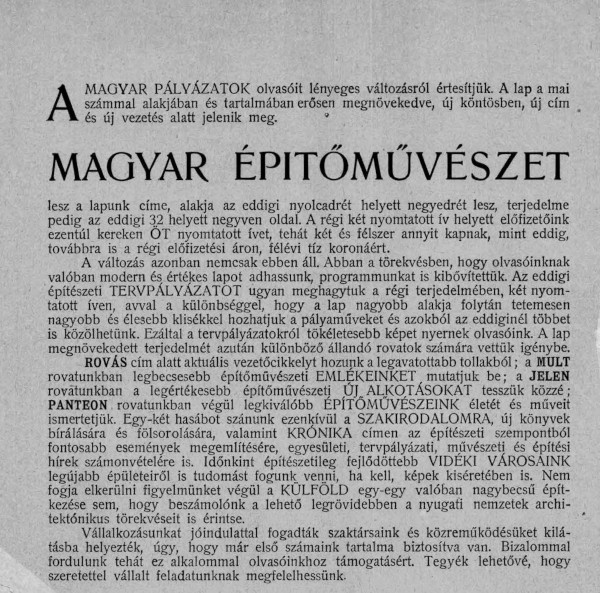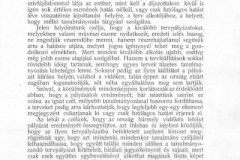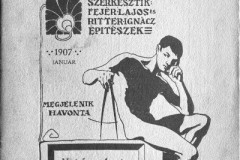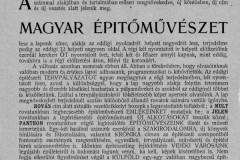Noble Ambitions, Fine Ideas
The first decade of MÉSZ
Text: Ákos Moravánszky
1902, the foundation year of the Hungarian Asssociation of Architects (MÉSZ) was halfway through the peaceful, almost 5 decade long belle époque era between 1867 and 1914. Architects, the majority of whom significantly contributed to te evolution of Budapest into a global capital city, made a decision to launch their own association. The foundation assembly organized in the conference hall of the Art Gallery on June 8th, 1902 had a total of 50 architects as participants and had been presided by Ödön Lechner as its senior chairman. Alajos Hauszmann, professor with the Technical University was elected the first master to lead this body of architects with Ödön Lechner as its second master. One of the most significant tasks of MÉSZ was to make the system of tendering compulsory. Its first periodical was thus titled Magyar Pályázatok (Hungarian Projects) first published in 1903. This was the first professional journal of Hungarian architects as such, from which in 1907 Magyar Építőművészet evolved in a larger and more extensive format. Lechner’s and Otto Wagner’s names are often used to mark two contrary trends of the turn of the century, which finely fits the well-known contemporary scheme of national versus modernist interpretation, which in turn has viewed everything as dichotomy and dividedness. But even if these two trends are different regarding their programmes and ideologies, both architects had been looking for a paradigm of a modern urban architecture, and their solutions are easy and suited to compare and are based on the renewal of our revivalist style heritage instead of its rejection, considering the social and technical changes brought about by modern society. Wagner and Lechner met at the conference hall of MÉSZ on December 8th, 1911 during a special general assembly. Otto Wagner delivered a lecture on the qualities of master arcitects, following which he was elected an honorary member of the Association. A total of 25 Austrian artists also participated in the meeting, among them such excellent ones as Gustav Klimt, Emil Hoppe and Koloman Moser. It was an act of significance and symbolism as it reflected that the Association ambitions to reconcile the competing forces, rivalling trends and tendencies in order to produce a synthesis.



